Discover 35 hidden attractions, cool sights, and unusual things to do in Nuremberg (Germany). Don't miss out on these must-see attractions: Germanisches Nationalmuseum, St. Sebald, and Nuremberg Zoo. Also, be sure to include Nuremberg Castle in your itinerary.
Below, you can find the list of the most amazing places you should visit in Nuremberg (Bavaria).
Table of Contents
Germanisches Nationalmuseum
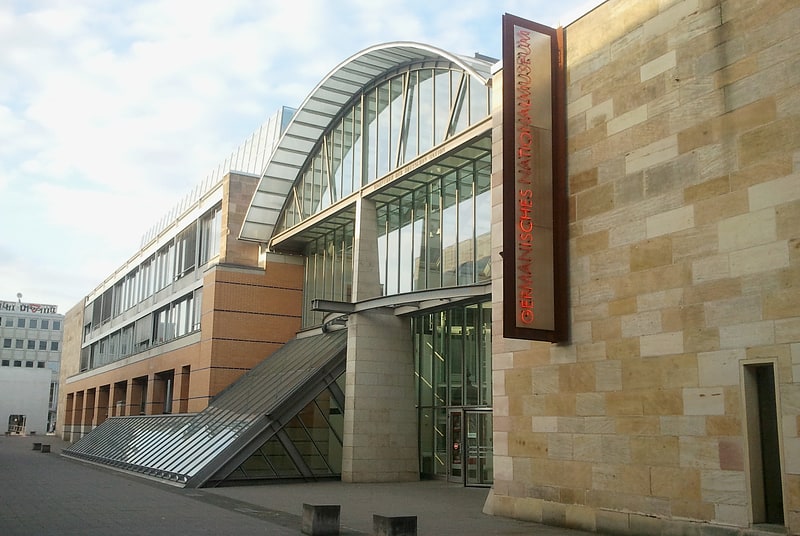
Museum in Nuremberg, Germany. The Germanisches National Museum is a museum in Nuremberg, Germany. Founded in 1852, it houses a large collection of items relating to German culture and art extending from prehistoric times through to the present day. The Germanisches National Museum is Germany's largest museum of cultural history. Out of its total holding of some 1.3 million objects, approximately 25,000 are exhibited.
The museum is situated in the south of the historic city center between Kornmarkt and Frauentormauer along the medieval city wall. Its entrance hall is situated on Kartäusergasse which was transformed by the Israeli sculptor Dani Karavan to the Way of Human Rights (German: Straße der Menschenrechte).[1]
Address: Kartäusergasse 1, 90402 Nürnberg (Mitte)
St. Sebald
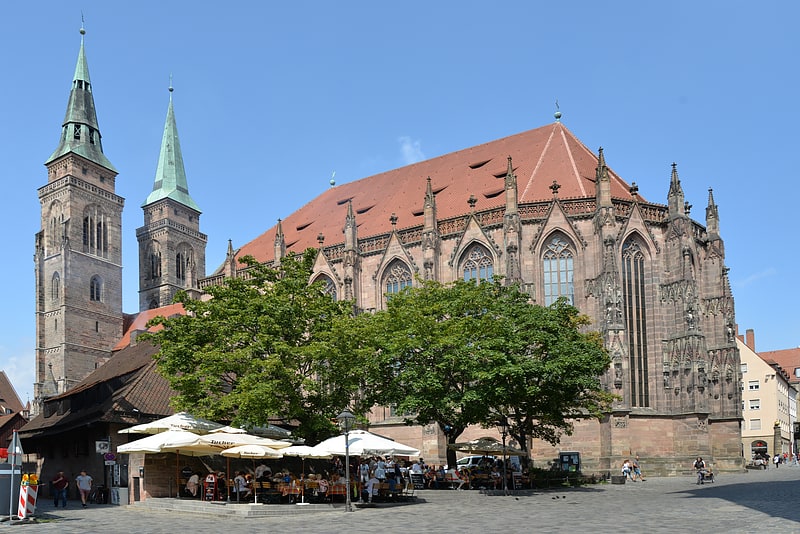
Medieval church with a large pipe organ. St. Sebaldus Church is a medieval church in Nuremberg, Germany. Along with Frauenkirche and St. Lorenz, it is one of the most important churches of the city, and also one of the oldest. It is located at the Albrecht-Dürer-Platz, in front of the old city hall. It takes its name from Sebaldus, an 8th-century hermit and missionary and patron saint of Nuremberg. It has been a Lutheran parish church since the Reformation.[2]
Address: Winklerstraße 26, 90403 Nürnberg (Mitte)
Nuremberg Zoo
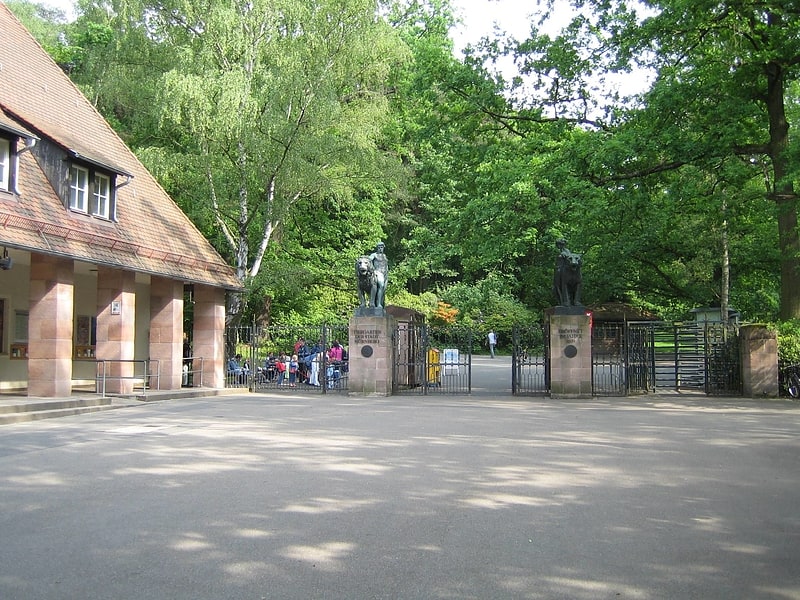
Also known as: Tiergarten Nürnberg
Zoo with woodland and exhibitions center. Nuremberg Zoo is a zoo located in the Nuremberg Reichswald, southeast of Nuremberg, Germany. With an area of 67 hectares, approximately 300 animal species are kept by the zoo.[3]
Address: Am Tiergarten 30, 90480 Nuremberg (Ost)
Nuremberg Castle
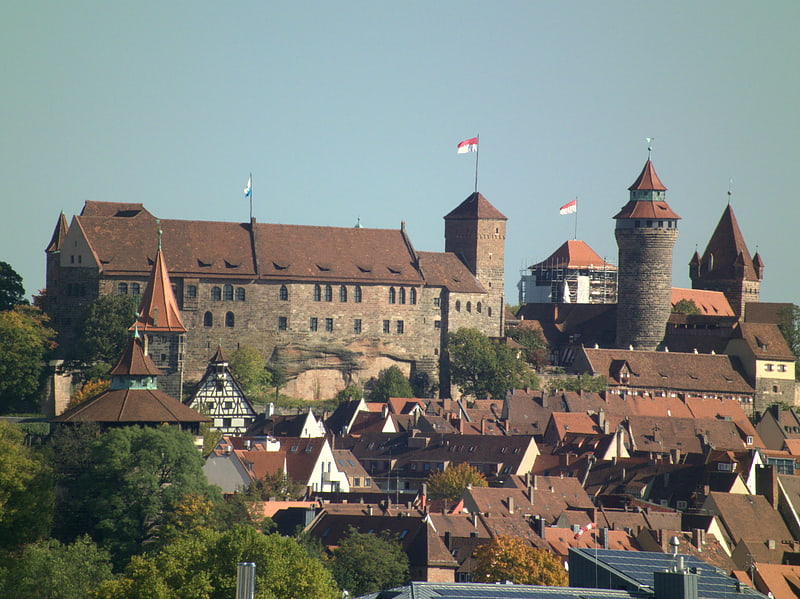
Also known as: Nürnberger Burg
Landmark medieval castle and palace. Nuremberg Castle is a group of medieval fortified buildings on a sandstone ridge dominating the historical center of Nuremberg in Bavaria, Germany.
The castle, together with the city walls, is considered to be one of Europe's most formidable medieval fortifications. It represented the power and importance of the Holy Roman Empire and the outstanding role of the Imperial City of Nuremberg.[4]
Address: Burgstraße 21, 90403 Nürnberg (Mitte)
Frauenkirche
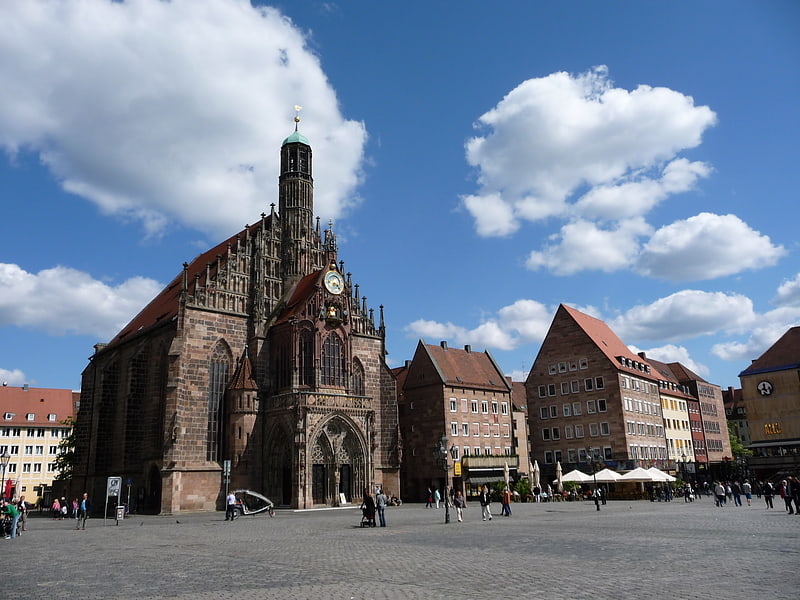
14th-century Gothic church with artwork. The Frauenkirche is a church in Nuremberg, Germany. It stands on the eastern side of the main market. An example of brick Gothic architecture, it was built on the initiative of Charles IV, Holy Roman Emperor between 1352 and 1362. The church contains many sculptures, some of them heavily restored. Numerous works of art from the Middle Ages are kept in the church, such as the so-called Tucher Altar, and two monuments by Adam Kraft.[5]
Address: Hauptmarkt 14, 90403 Nuremberg (Mitte)
Albrecht Dürer's House
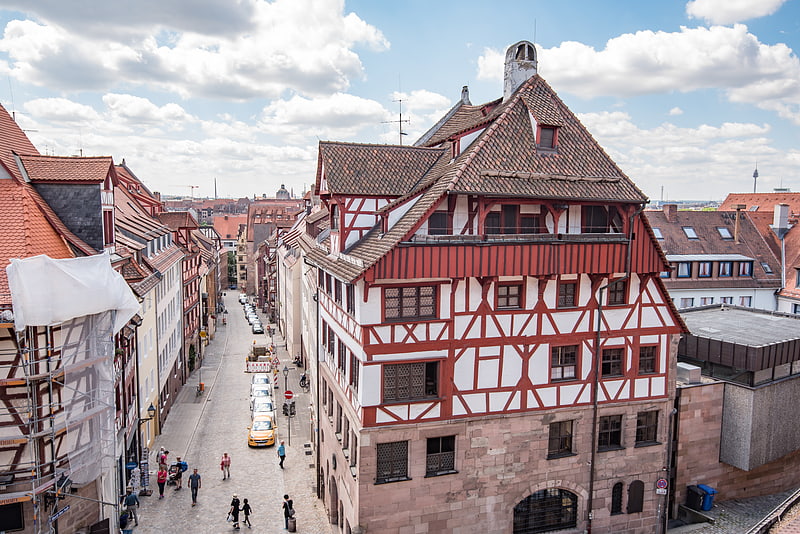
Also known as: Albrecht-Dürer-Haus
Museum of the artist's life and work. Albrecht Dürer's House is a Nuremberg Fachwerkhaus that was the home of German Renaissance artist Albrecht Dürer from 1509 to his death in 1528. The House lies in the extreme north-west of Nuremberg's Altstadt, near the Kaiserburg section of the Nuremberg Castle and the Tiergärtnertor of Nuremberg's city walls.
The house was built around 1420. It has five stories; the bottom two have sandstone walls, while the upper stories are timber framed; the entire structure is topped by a half-hip roof. In 1501, it was purchased by Bernhard Walther, a merchant and prominent astronomer. Walther remodeled the house, adding small windows to the roof so that it could function as an observatory. Walther died in 1504, and Dürer purchased the house in 1509.
Since 1871 the Albrecht-Dürer-Haus has been a museum dedicated to Dürer's life and work. In a restoration of 1909, the large dormer on the east-facing roof was replaced. In October 1944, it took significant damage from Allied bombing. It was rebuilt by 1949, but did not reopen as a museum until 1971, Dürer's 500th birthday.
The museum features installations of period furnishings, a re-creation of Dürer's workshop in which visitors can view demonstrations of printmaking techniques, and rotating exhibitions of drawings and prints by Dürer from the City of Nuremberg's Graphic Collection. Visitors can also receive a guided tour of the house from an actress playing Agnes Dürer, the wife of the artist.[6]
Address: Albrecht-Dürer-Straße 39, 90403 Nürnberg (Mitte)
DB Museum
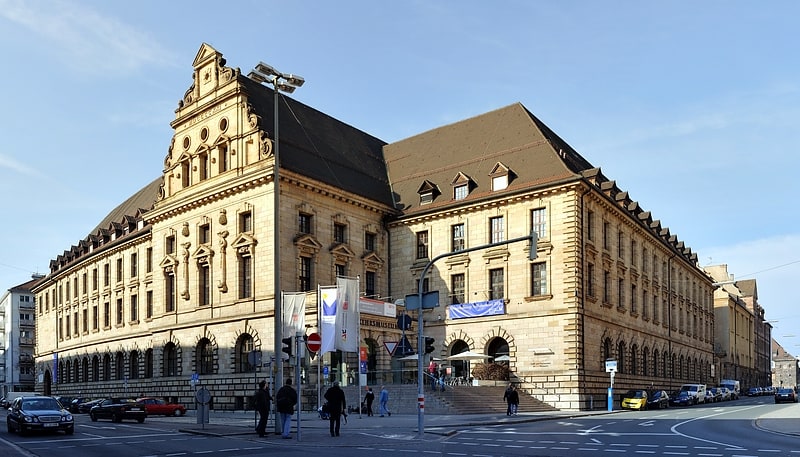
Also known as: Verkehrsmuseum Nürnberg
Venerable spot with railway exhibits. The Nuremberg Transport Museum is based in Nuremberg, Germany, and consists of the Deutsche Bahn's own DB Museum and the Museum of Communications. It also has two satellite museums at Koblenz-Lützel and Halle. The Nuremberg Transport Museum is one of the oldest technical history museums in Europe.
In February 2007 the official name of the DB Museum became the Company Museum of the Deutsche Bahn AG (Firmenmuseum der Deutschen Bahn AG). It is a milestone on the European Route of Industrial Heritage (ERIH).[7]
Address: Lessingstr. 6, 90443 Nuremberg (Mitte)
Documentation Center Nazi Party Rally Grounds

Also known as: Dokumentationszentrum Reichsparteitagsgelände
Museum in Nuremberg, Germany. The Documentation Center Nazi Party Rallying Grounds is a museum in Nuremberg. It is in the north wing of the unfinished remains of the Congress Hall of the former Nazi party rallies. Its permanent exhibition "Fascination and Terror" is concerned with the causes, connections, and consequences of Nazi Germany. Topics that have a direct reference to Nuremberg are especially taken into account. Attached to the museum is an education forum.[8]
Address: Bayernstraße 110, 90478 Nürnberg (Südost)
Neues Museum
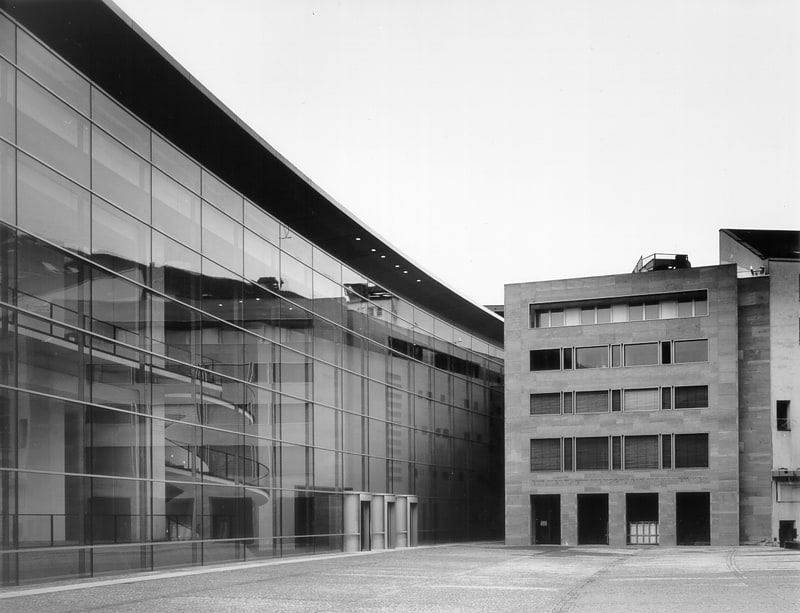
Museum in Nuremberg, Germany. Neues Museum Nürnberg is a museum for modern and contemporary art and design in Nuremberg.[9]
Address: Luitpoldstraße 3, 90402 Nürnberg (Mitte)
Fleisch Bridge

Also known as: Fleischbrücke
Late-Renaissance stone bridge with views. The Fleisch Bridge or Pegnitz Bridge is a late Renaissance bridge in Nuremberg, Germany. The bridge crosses the river Pegnitz in the center of the old town, linking the districts St. Sebald and St. Lorenz along the axis of the main market. The single-arch bridge was built between 1596 and 1598 and replaced an earlier mixed construction of stone and wood which had been repeatedly destroyed by flood.
The Fleisch Bridge is notable for several technical features that were advanced for its time. These include an unusual large width of 15.3 m, and a clear span of 27 m which made it the largest masonry bridge arch in Germany at the time of its construction. With a rise of only 4.2 m, the arch features a span-to-rise ratio of 6.4 to 1, giving the bridge an almost unprecedented flat profile.
This, however, came at the cost of high lateral thrusts even for a segmental arch bridge. This problem was solved by a particularly innovative construction of the abutments which were built onto 2000 wooden piles, 400 of which were rammed obliquely into the grounds. A very similar arrangement of the abutments had also been implemented slightly earlier at the Rialto bridge, leading to speculations about a technology transfer from Venice, with which Nuremberg shared close trade links. A recent in-depth research, however, stresses the originality of the Fleisch Bridge on grounds of technical differences between the two bridges.
The Fleisch Bridge has practically remained unchanged since the addition of a portal in 1599 and survived World War II almost unscathed. A Latin inscription at the portal reads: Omnia habent ortus suaque in crementa sed ecce quem cernis nunquam bos fuit hic Vitulus. ("All things have a beginning and grow, but the ox upon whom you now look was never a calf.")[10]
Address: An Der Fleischbrücke, Nuremberg (Mitte)
St. Elizabeth
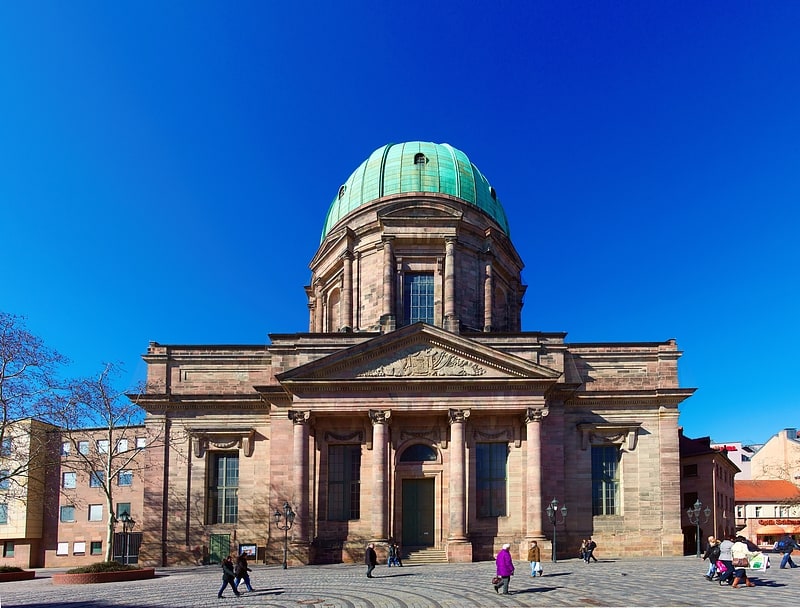
Also known as: St. Elisabeth
Catholic church in Nuremberg, Germany. St. Elizabeth's is a Roman Catholic church in Nuremberg in southern Germany. It is dedicated to Elizabeth of Hungary.[11]
Address: Jakobspl. 7, 90402 Nürnberg (Mitte)
St. Lorenz

Gothic church with artwork and large organ. St. Lorenz is a medieval church of the former free imperial city of Nuremberg in southern Germany. It is dedicated to Saint Lawrence. The church was badly damaged during the Second World War and later restored. It is one of the most prominent churches of the Evangelical Lutheran Church in Bavaria.[12]
Address: Lorenzer Pl. 1, 90402 Nürnberg (Mitte)
Christkindlesmarkt
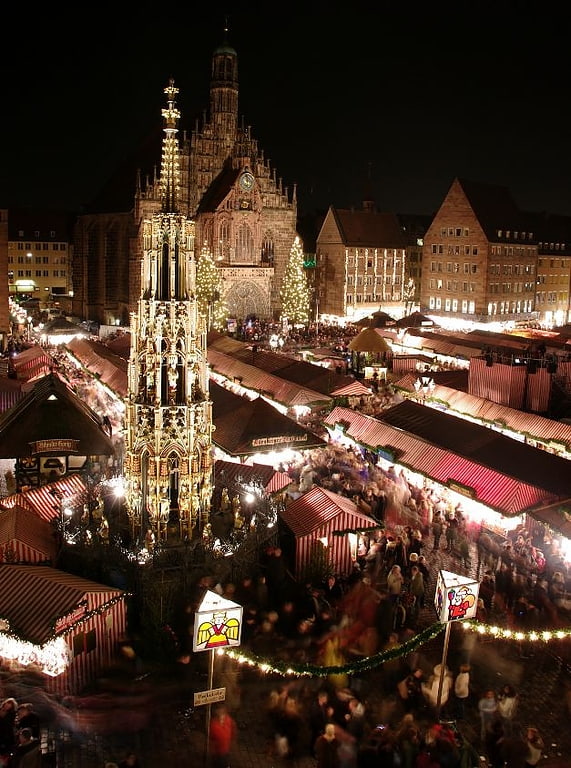
Christkindlesmarkt is a Christmas market that is held annually in Nuremberg, Germany. It takes place during Advent in the Hauptmarkt, the central square in Nuremberg’s old town, and in adjoining squares and streets. With about two million visitors a year the Nürnberger Christkindlesmarkt is one of the largest Christmas markets in Germany and one of the most famous in the world. Every year the Christmas market begins on the Friday preceding the first Sunday in Advent and ends on 24 December unless that day is a Sunday.[13]
Arena Nürnberger Versicherung

Indoor arena in Nuremberg, Germany. The Arena Nürnberger Versicherung is a multi-use indoor arena that is located in Nuremberg, Germany. It can host sports matches, including those of tennis, ice hockey, handball, and basketball, as well as musical concerts. It has a capacity of up to 9,400 people for sports, and up to 11,000 people for concerts.[14]
Address: Kurt-Leucht-Weg 11, 90471 Nuremberg (Südost)
St. James's Church
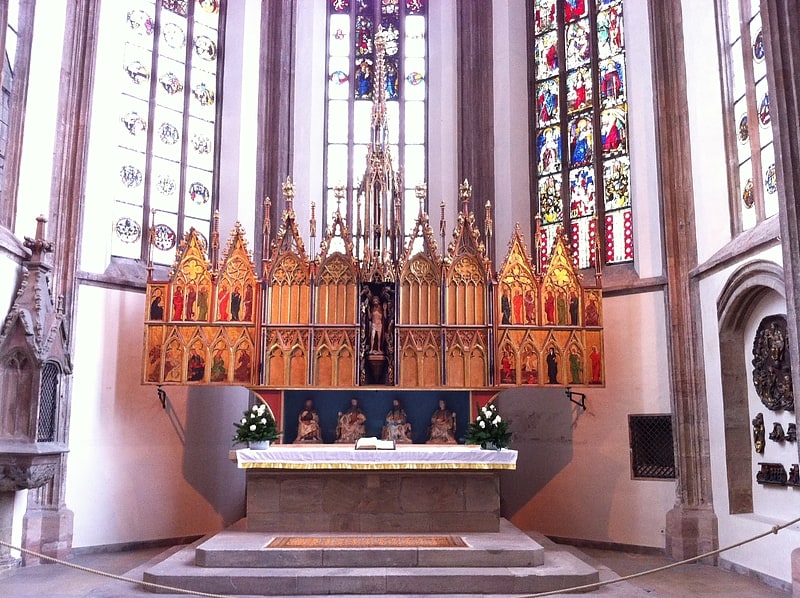
Also known as: St. Jakob
Evangelical church in Nuremberg, Germany. St. Jakob is a medieval church of the former free imperial city of Nuremberg in southern Germany. It is dedicated to Saint James the Greater. The church was badly damaged during the Second World War and later restored.[15]
Address: Jakobspl. 1, 90402 Nürnberg (Mitte)
Volkspark Dutzendteich
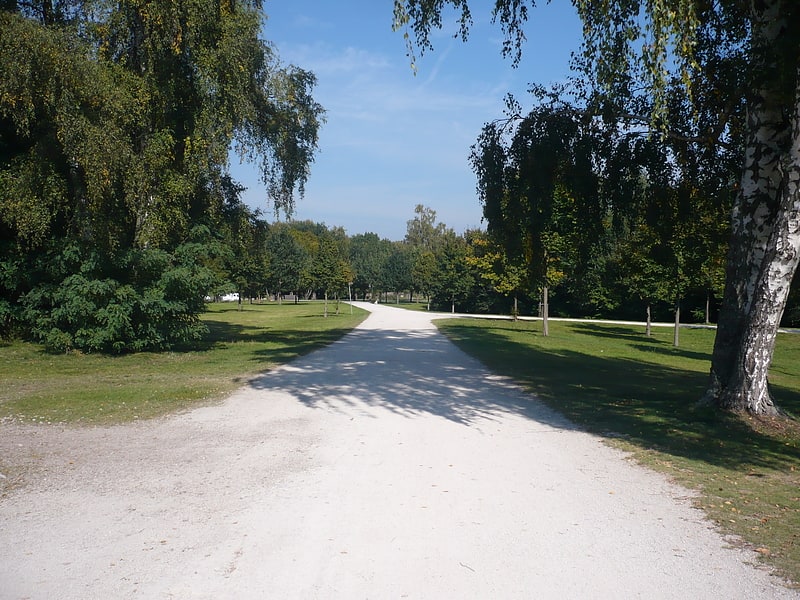
State park in Nuremberg, Germany. Volkspark Dutzendteich is a park located in Nuremberg, Germany. It hosts the annual Rock im Park festival.[16]
Kunsthalle Nürnberg
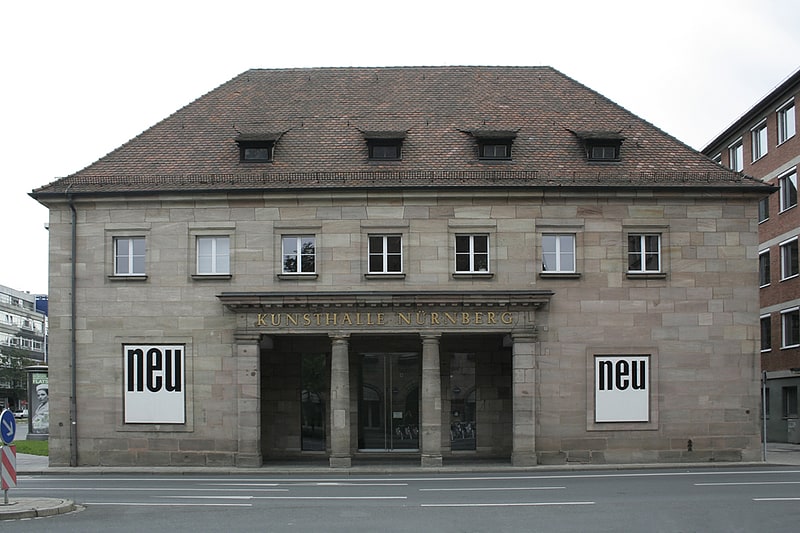
Art gallery in Nuremberg, Germany. The Kunsthalle Nürnberg is an art centre founded in 1967, near the city centre. It organizes exhibitions by contemporary international artists in its galleries in Nuremberg. The Kunsthalle commissions new work by a majority of the artists it works with.
Solo exhibitions (selection):
- 2017: Fearless Alicia Framis
- 2016: Scroll Down And Keep Scrolling Fiona Banner
- 2015: Warten auf Gegenwart II Alicja Kwade
- 2014: I tempi doppi Tatiana Trouve
- 2012: From Here to Eternity Susan Hiller
- 2011: Silvia Bächli and Eric Hattan
- 2010/2011: Mircea Cantor
- 2010: Corinne Wasmuht, Karla Black, Mathilde ter Heijne
- 2009/2010: Jürgen Teller
Group exhibitions (selection):
- 2012: Goldrausch featuring works by Pawel Althamer, Felix Gonzalez-Torres, Filip Gilissen, Jonathan Monk, Claus Richter and others.
- 2012: 30 Künstler / 30 Räume featuring works by Marc Camille Chaimowicz, Michael Beutler, Nairy Baghramian, Rosemarie Trockel, Tobias Rehberger and others.
Address: Lorenzer Str. 32, 90402 Nuremberg (Mitte)
Chain Bridge
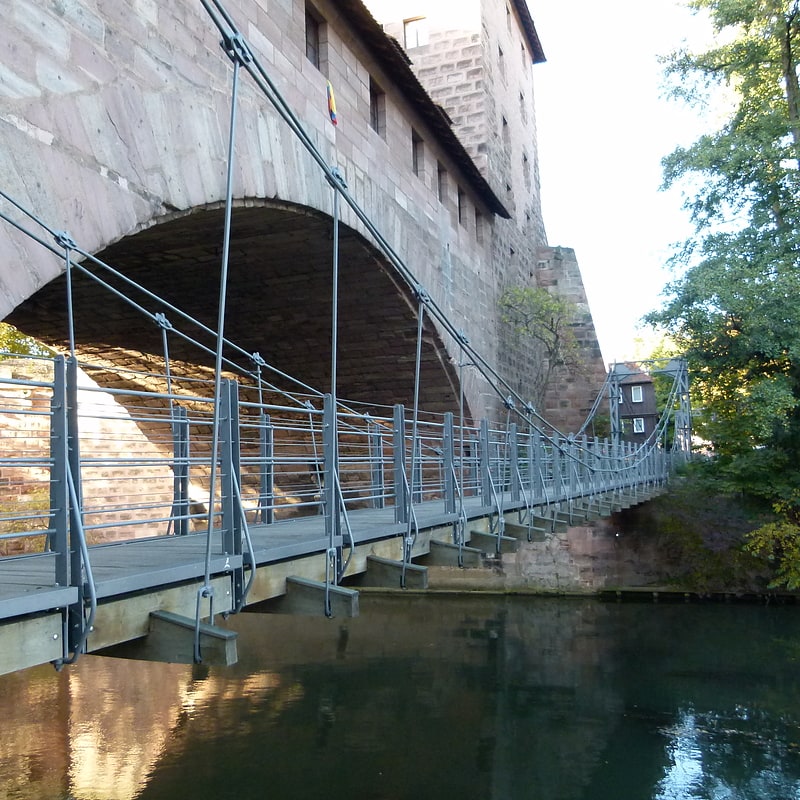
Also known as: Kettensteg
Bridge. The Chain Bridge is a pedestrian chain bridge in Nuremberg, Germany. The bridge crosses the river Pegnitz just a few meters upriver of Fronveste and Schlayerturm, fortifications in the course of the medieval city wall guarding the river's exit from the town. It connects Maxplatz in Sebalder Altstadt with Untere Kreuzgasse in Lorenz, the quarter on the south side of the river.
The Chain Bridge was built in 1824 and is thus the oldest chain bridge on the European continent. It was not given any specific name, but the public used to call it by what it appeared to be: a narrow pedestrian bridge (German: Steg) with chains (German: Ketten).
The bridge has two spans of 33 m each and a total length of 68 m. On either side, there are two strands of wrought iron eyebars, originally supported by three wooden towers standing on the banks of the river and on the small island, and anchored in solid masonry blocks on either side. The wooden deck was suspended from the chains by hangers, also of wrought iron.
The wooden towers were damaged by the very high floods of 1909 and, thereafter, replaced by towers of iron trusses still in existence.
As in most early suspension bridges, its bridge deck was not stiff and easily developed swaying motions under the steps of the pedestrians—and some youths enjoyed provoking the swaying on purpose. Eventually, in 1927 a police ordinance was issued in order to stop such dangerous actions. In 1930, the bridge deck was stiffened by steel girders and wooden piles were placed in the river supporting the deck. In the Nazi era, the official opinion was to remove it altogether, which was only prevented by the outbreak of war in 1939.
In 2009, the wooden piles were not safe any more and the bridge had to be closed. Substantial donations of citizens and local companies allowed a complete reconstruction, using as much as possible of the original structure and reinstating the suspension bridge structure without any other supports. The renewed wooden deck was stiffened by integrating a flat steel box girder into it, which is hardly visible. On 22 December 2010 the bridge was reopened to pedestrian use.[18]
Erfahrungsfeld zur Entfaltung der Sinne
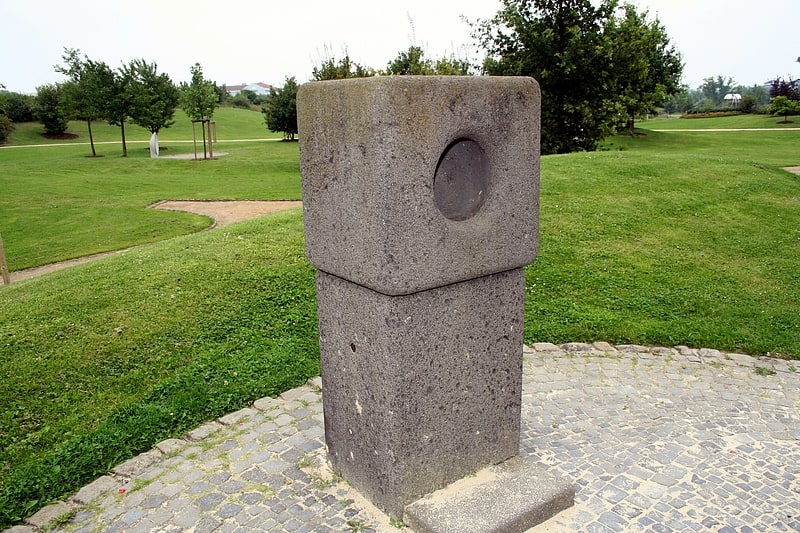
The Erfahrungsfeld zur Entfaltung der Sinne is an interactive exhibition that stimulates all the senses, designed by Hugo Kükelhaus. The different exhibits are intended to inspire the visitor to experiment with them, to explore them, like in a park of the senses or a science center. Kükelhaus constructed 32 pieces of playground equipment for schools in the city of Dortmund and demonstrated some of these equipment at the Expo 67 world exhibition in Montreal. His holistic concept for a large open-air exhibition was shown in the exhibition Phenomena, shown in Rotterdam, South Africa, and Bietigheim, among others.[19]
Address: Wöhrder Wiese/Prinzregentenufer, Nuremberg (Mitte)
St Egidien
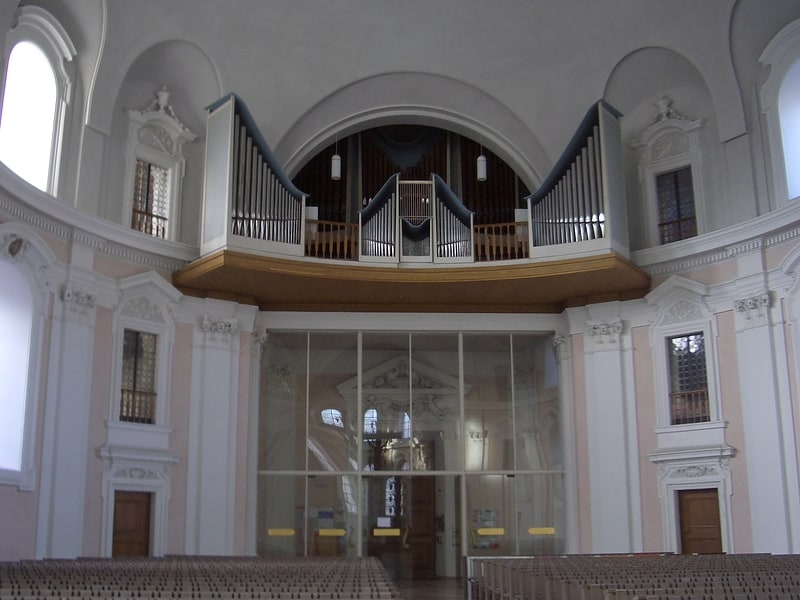
Also known as: St. Egidien
Evangelical church in Nuremberg, Germany. St Egidien on Egidienplatz is the former Benedictine Abbey of Saint Giles, now a church in the former free imperial city of Nuremberg, southern Germany. It is considered a significant contribution to the baroque church architecture of Middle Franconia.[20]
Address: Egidienpl. 10, 90403 Nürnberg (Mitte)
Schmausenbuck

Mountain in Germany. Schmausenbuck is a mountain of Bavaria, Germany.[21]
Pellerhaus
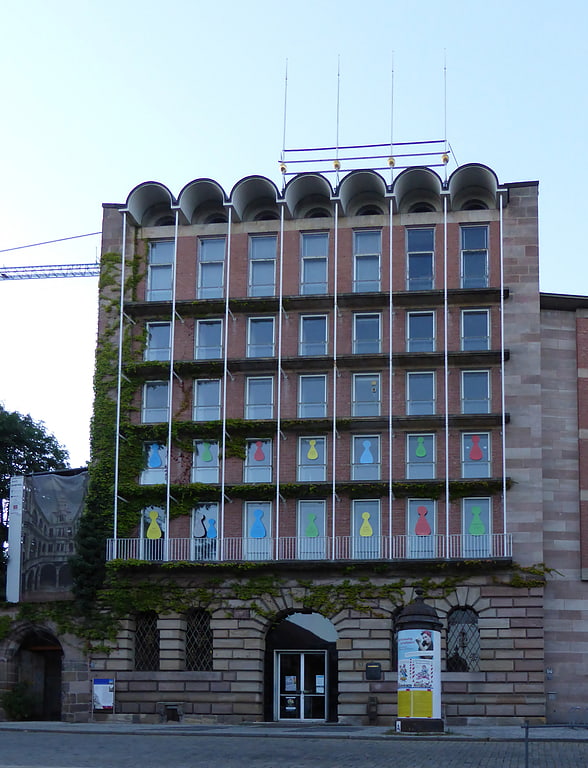
Tourist attraction in Nuremberg, Germany. The Pellerhaus monument is an archive and library building on Egidienplatz in Nuremberg's old city centre. It extends over the area of the historic Pellerhaus and the historic Imhoff house to the east of it, which was rebuilt after the war in the contemporary design of the late 1950s.
An important art and architectural Renaissance building stood here before its destruction in 1944 to 1945 during the bombing of Nuremberg in World War II. The ground floor and parts of the courtyard have been preserved and were integrated into the new building in 1955/1957. At that time, the funds for the complete reconstruction were lacking, but modern Mayer architects' building became an outstanding example of 1950s architecture and is part of Nuermbergs modern Cultural heritage since 1998. From 2008 to 2018, the courtyard was reconstructed through the initiative of the cultural organisation Old Town Friends Nuremberg (Altstadtfreunde Nürnberg) using donations. The Old Town Friends intend to reconstruct the entire Pellerhaus to its original design, but this is widely discussed as a controversial issue.[22]
Palace of Justice

Also known as: Justizpalast
Building in Nuremberg, Germany. The Nuremberg Palace of Justice is a building complex in Nuremberg, Bavaria, Germany. It was constructed from 1909 to 1916 and houses the appellate court, the regional court, the local court and the public prosecutor's office. The Nuremberg Trials Memorial is located on the top floor of the courthouse.[23]
Address: Nuremberg, Fuerther Str. 110, 90429
Fernmeldeturm Nürnberg
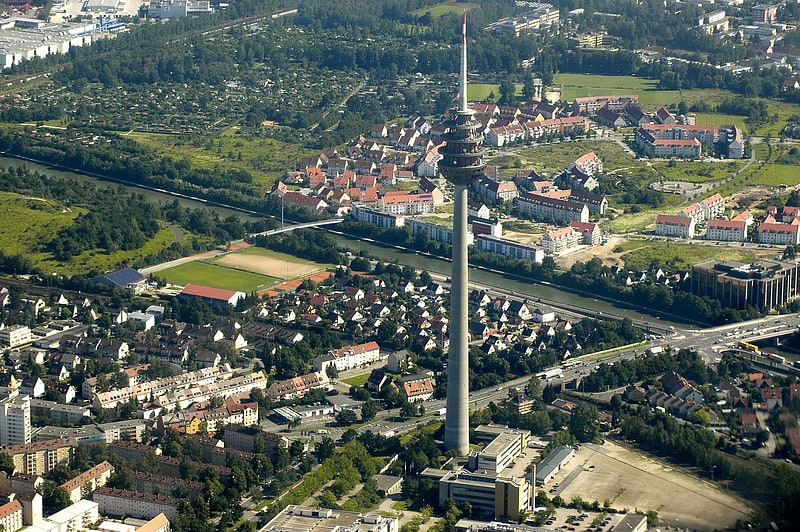
The Fernmeldeturm Nürnberg, the tallest structure in Bavaria, is a telecommunication tower in Nuremberg, southern Germany. Also called the Nürnberger Ei because of its egg-shaped tower basket in a height of 185 metres, it is 292 metres high and was built between 1977 and 1980 according to blueprints by architect Erwin Heinle.
The tower basket accommodates transmission mechanisms for Frequency modulation, DAB, UMTS, pager, amateur radio and a microwave radio relay link and – closed since 1991 – a rotating restaurant and a prospect platform. Responsible operator is the DFMG Deutsche Funkturm (German radio tower) GmbH, a subsidiary of Deutsche Telekom based in Münster. From 22 January 2003 to 4 April 2003 the Nürnberg telecommunication tower also served for the spreading of the program of megaradio on mediumwave frequency 945 kHz. For this a wire antenna was strung along the tower shaft, from the top of the tower to the roof of an operating building near the tower.
Since July 2009 a 360° Panoramacamera shows the view over Nuremberg from 194 metres.[24]
Address: Hansastraße 1, Nuremberg (West)
Toy Museum
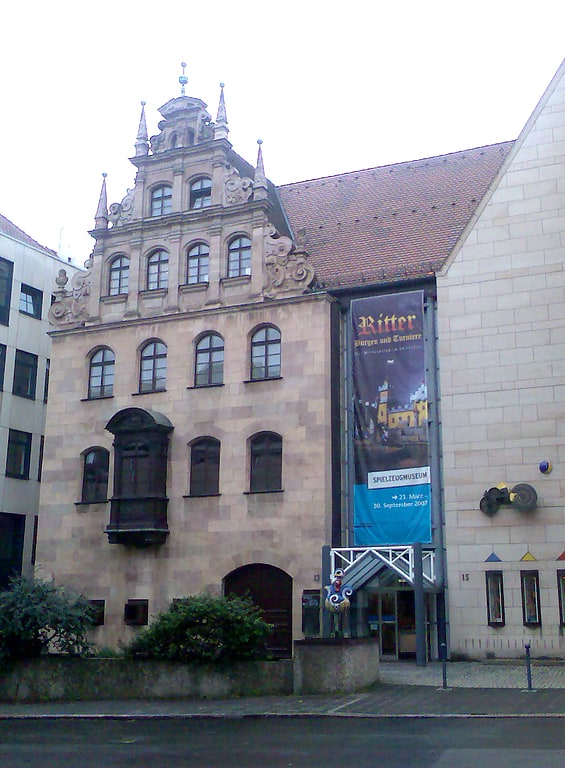
Also known as: Spielzeugmuseum
Museum in Nuremberg, Germany. The Nuremberg Toy Museum in Nuremberg, Bavaria, is a municipal museum, which was founded in 1971. It is considered to be one of the most well known toy museums in the world, depicting the cultural history of toys from antiquity to the present.[25]
Address: Karlstraße 13-15, 90403 Nürnberg (Mitte)
Way of Human Rights
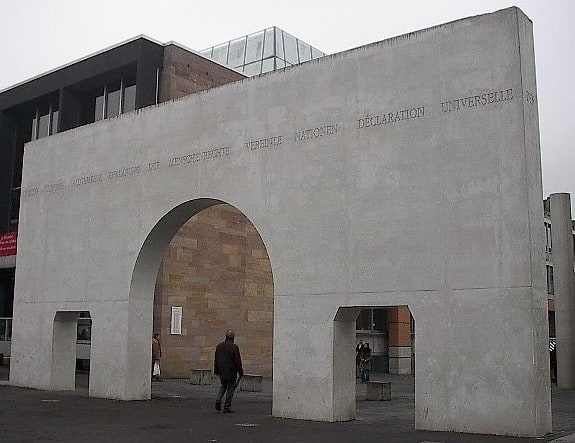
Also known as: Straße der Menschenrechte
Sculpture. The Way of Human Rights is a monumental outdoor sculpture in Nuremberg, Germany. It was opened on 24 October 1993. It is sited on the street between the new and old buildings of the Germanisches Nationalmuseum, connecting Kornmarkt street and the medieval city wall.
In 1988, a twelve-person jury from the Germanisches Nationalmuseum held a design competition to decide on the artistic design of the Kartäusergasse street in Nuremberg.
The winner was a proposal by Israeli artist Dani Karavan consisting of a gate, 27 round pillars made of white concrete, two pillars buried in the ground showing only a round plate, and one columnar oak, for a total of 30 pillars.
Engraved in each pillar is one article of the Universal Declaration of Human Rights in German and another language. The pillars are 8 metres in height, 80 cm in diameter, and spaced regularly at 5 metres along an axis. The north gate mirrors the medieval city gate located at the south end of the street.
The site of project has a layered history, including the remnants of a monastery, the medieval city wall, buildings designed by Sep Ruf in the 1950s and 1960s, and a glass-enclosed entrance designed by the firm ME DI UM in 1993.
This sculpture is part of Nuremberg's efforts to shake off its Nazi-era reputation as the "City of the Party Rallies" and reinvent itself as a "City of Peace and Human Rights".
In 2001, Nuremberg was honored for this attempt at transformation with the UNESCO Prize for Human Rights Education, the Way of Human Rights being specifically cited. The monument is intended as both a repudiation of past crimes and a permanent reminder that human rights are still regularly violated. Nuremberg's prize for human rights, the Nuremberg International Human Rights Award, is awarded on the site every two years.[26]
Church of St. Catherine
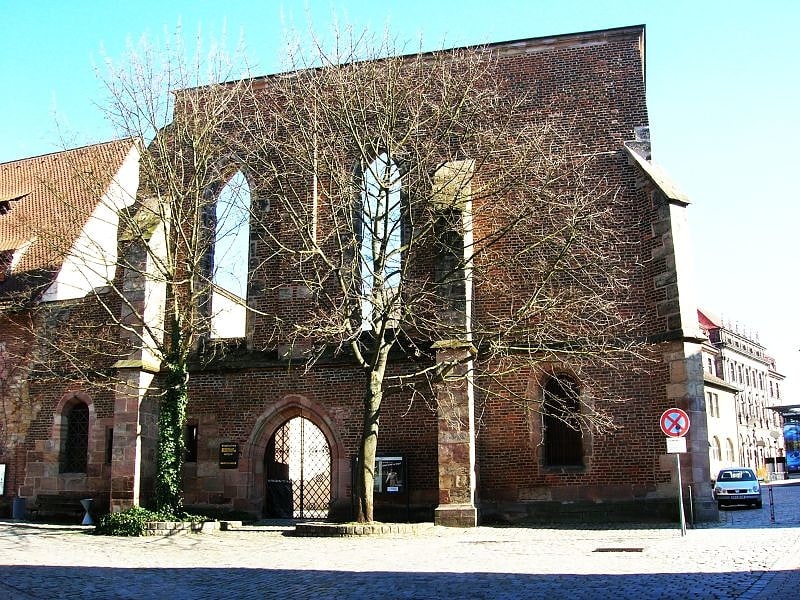
Also known as: Katharinenkloster Nürnberg
St. Katharina in Nuremberg, Bavaria, was an important medieval church, destroyed during the Second World War and preserved as a ruin.[27]
Address: Am Katharinenkloster 6, Nuremberg (Mitte)
Staatstheater Nürnberg

Theatre in Nuremberg, Germany. The Staatstheater Nürnberg is a German theatre company in Nuremberg, Bavaria. The theatre is one of four Bavarian state theatres and shows operas, plays, ballets and concerts.[28]
Address: Richard-Wagner-Platz 2-10, 90443 Nuremberg (Mitte)
St. Rochus Cemetery

Also known as: Rochusfriedhof
Cemetery in Nuremberg, Germany. St. Rochus Cemetery is a cemetery in Nuremberg, Germany. It is located in the Gostenhof quarter.[29]
Address: Rothenburger Strasse, 90443 Nuremberg (Mitte)
Museum of Communication
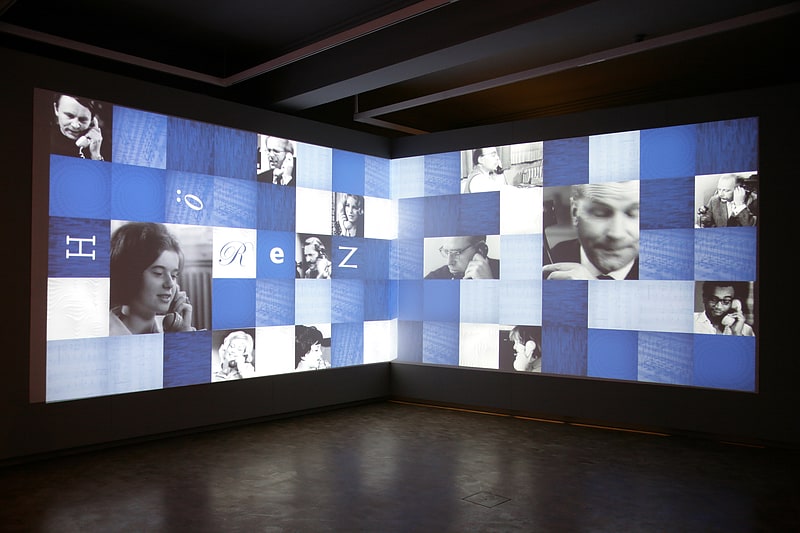
Also known as: Museum für Kommunikation Nürnberg
Museum in Nuremberg, Germany. The Museum of Communication is co-located with the Nuremberg Transport Museum in Nuremberg, Germany. It shows various ways in which people communicate with each other.[30]
Address: Lessingstr. 6, 90443 Nuremberg (Mitte)
Schöner Brunnen
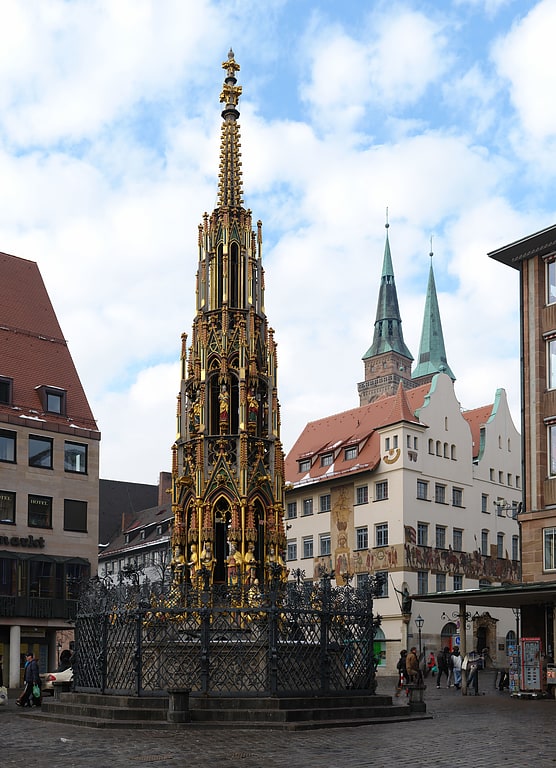
Iconic fountain with Gothic church spire. Schöner Brunnen is a 14th-century fountain located on Nuremberg's main market next to the town hall and is considered one of the main attractions of the city's Historical Mile. The fountain is approximately 19 meters high and has the shape of a Gothic spire.[31]
Museum Tucherschloss and Hirsvogelsaal

The Hirsvogelsaal is an early Renaissance building in Hirschelgasse in Nuremberg. It is a 1534 by Lienhard III. Hirschvogel, a Nuremberg long-distance merchant, made extension of his Gothic residence. The occasion for the construction was his marriage to Sabine Welser from Augsburg.
Address: Hirschelgasse 9-11, 90403 Nürnberg (Mitte)
City walls of Nuremberg

Also known as: Stadtmauer
The city walls are the medieval defensive mechanism surrounding the old city of Nuremberg, Germany. Construction started in the 12th Century and ended officially in the 16th Century. They measured 5 kilometers around the old town. The Nuremberg Castle together with the city wall is meant to be one of Europe's most considerable medieval defensive systems.
The city wall is one of the most important art and architectural monuments in the city of Nuremberg. In the north, the extensive castle complex is fully integrated into the fortification.[32]
Stein bei Nürnberg
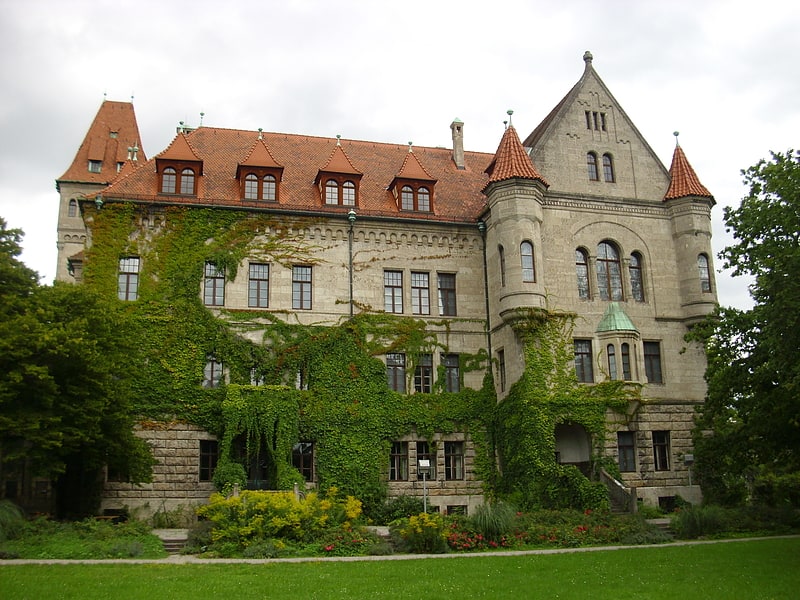
Also known as: Stein
Town in Germany. Stein is a town in the district of Fürth, in Bavaria, Germany. It is situated 7 km south of Fürth, and 7 km southwest of Nuremberg.[33]
Frankenhalle
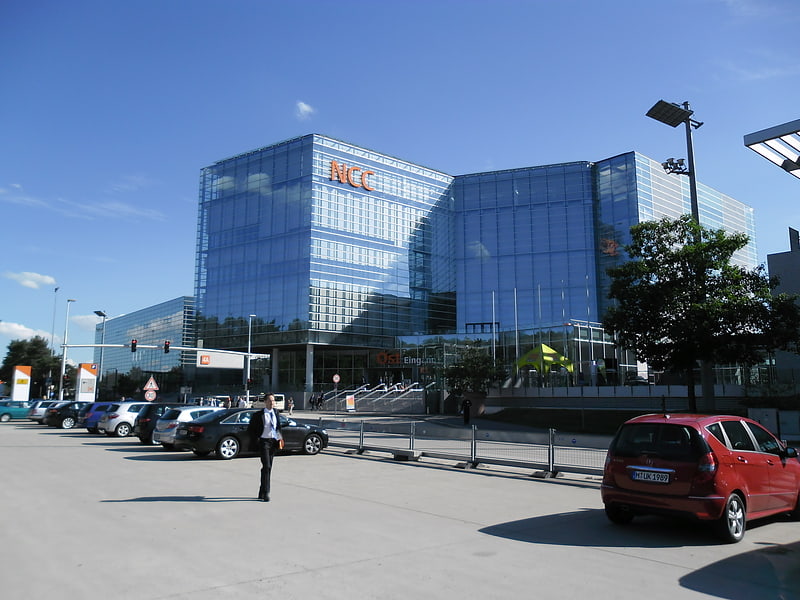
Convention center in Nuremberg, Germany. Frankenhalle is a multi-purpose indoor arena located on the site of the Messezentrum Nuremberg in Nuremberg, Germany. The arena opened in 1984 and has a capacity of 5,000 people. It hosts concerts, exhibitions, fairs and other events.[34]